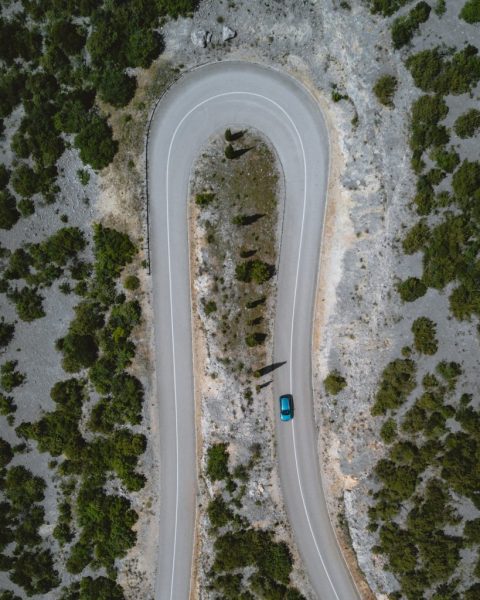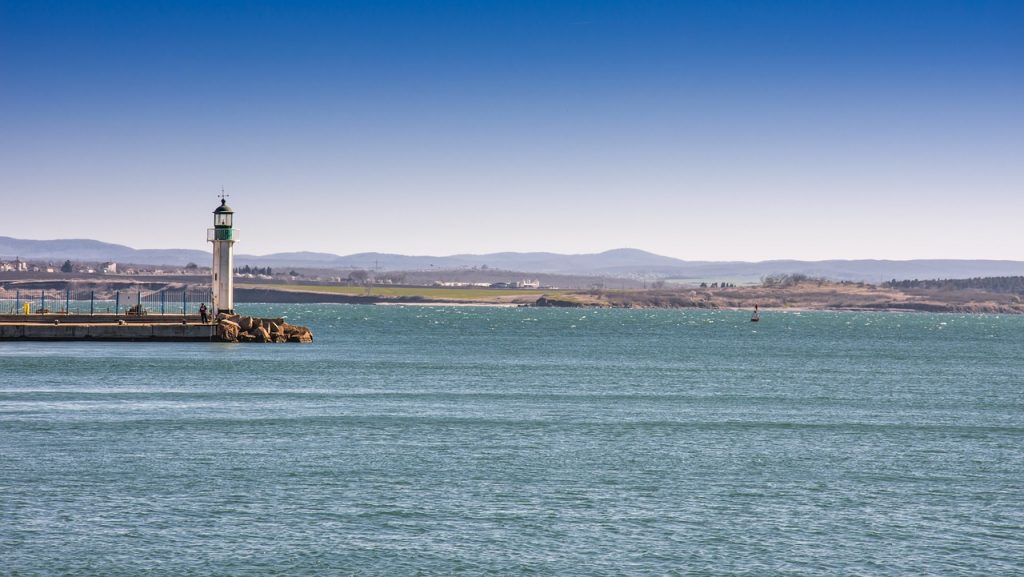
Summer travel # 2: what to remember in different European countries?
Content
The sunny countries of southern Europe are a seductive place for summer travel. Many Poles will definitely choose a car there. However, each country has its own customs - some of the rules and regulations in force in other countries may surprise you. Therefore, before leaving, it is worth knowing about them a few important facts.
What will you learn from this post?
- What to remember when traveling by car in Europe?
- What are the traffic regulations in every European country?
TL, д-
Poles consider Croatia and Bulgaria to be among the most attractive countries. Many of our compatriots visit them every year, and a significant part of them decide to travel by car through Slovakia, Hungary and Serbia. It is worth remembering that in each of these countries the traffic rules are slightly different. It is forbidden to drive on the roads of Slovakia without a long list of mandatory equipment, and dangerous luggage, such as sports equipment, must be carried in roof racks. Drunk driving is strictly prohibited in Hungary, and special speed requirements apply in non-European Union Serbia. Getting around Croatia and Bulgaria shouldn't be a problem for Poles, as the rules in these countries are very similar to those in Poland. However, do not forget about buying Bulgarian road vignettes and reflective vests, which are mandatory in Croatia every time the car stops outside the designated parking lot.
Preparing for the trip
We tried to bring the topic of the Green Card valid in some countries and other documents necessary for crossing European borders closer in the previous article from the "Holiday Trips" series. In this respect, the countries of southern Poland are no different from Western countries. However, if you have already filled out the set of required documents, it is time to check exactly what rules and customs of the “South” you should know about before leaving.
On the road to the sunny south
Croatia
Croatia is one of the most visited European countries by Poles. No wonder, because there are both attractive Mediterranean resorts and real architectural gems, primarily Dubrovnik. Also, driving your own car in Croatia is not much of a problem because the rules (and fuel prices!) are very similar to those that apply to us on a daily basis. For example, in Croatia, as in Poland, all passengers must remember to fasten their seat belts... The speed limits are slightly different:
- 50 km / h in settlements;
- outside settlements 90 km / h for cars, 80 km / h for cars weighing more than 3,5 tons and with a trailer;
- on highways 110 km / h for cars, 80 km / h for other vehicles;
- The 130 km / h speed on motorways does not only apply to trucks and vehicles with trailers, the speed of which must not exceed 90 km / h.
Croatian highways tollthe amount of the fare depends on the type of vehicle and the distance traveled. It can be paid in cash or without cash at the weekend gate.
It is worth knowing that in Croatia the movement of cars with the lights on is allowed only in the winter season (from the last Sunday in October to the last Sunday in March) and in case of limited visibility. For the whole year, drivers of scooters and motorcycles must turn on the dipped beam.
Apart from the warning triangle, which is mandatory in Poland be sure to have reflective vests for the driver and passengers, a first aid kit and spare bulbs... In turn, a fire extinguisher and a tow rope are among the recommended items, although you will not receive a penalty for missing them. When traveling with children under 5 years old, you need to remember about a special place!
Croatia is famous for rakia, but wine and grappa are also popular drinks. However, young drivers should be careful not to consume alcohol before driving because driving a vehicle with even 0,01 ppm under the age of 25 may result in the police revoking a driver's license.... Those with more experience can afford 0,5ppm. However, you should be careful. It is easy to get into an accident on twisting Croatian roads and there are police patrols on the city toll roads and highways.

Bulgaria
Bulgaria is also one of the most visited countries in Europe. Poles are attracted by the beautiful sandy beaches of the Black Sea, delicious cuisine and famous wines, as well as ... sentimentality! Bulgaria has been one of the most popular destinations for our parents and grandparents. This is why we are so eager to come back to this.
Due to the large number of tourists and the fiery southern temperament Traffic in Bulgaria can be very limited... However, compliance with the rules should not cause any difficulties, since they are very similar to the Polish ones. Just remember to slow down to 130 km / h on motorways. Vignettes are required for all national roads outside of cities.which can be bought at gas stations. It is best to do this immediately after crossing the border, as driving without a vignette will incur a fine of 300 BGN (i.e. about 675 PLN). This rule applies not only to two-wheeled vehicles. Drivers traveling during the summer season will breathe a sigh of relief when they turn off the dipped headlights, the use of which is mandatory in Bulgaria only from November 1 to March 1.
Caution should be exercised by drivers whose car is equipped with a CB radio. To use this type of equipment in Bulgaria, a special license from the Ministry of Communications is required.

Serbia
Serbia is a very attractive country for tourists. Beautiful mountain nature, historical cities, fortresses and temples, achievements of various religions. - all this testifies to the extraordinary cultural richness of this region. However, due to the fact that Serbia does not belong to the European Union, the journey may seem difficult for some people... This is due, for example, to additional obligations imposed on foreign tourists, or to problems caused by the loss of their documents, which become invalid after reporting the loss or theft. Besides local drivers love daring drivingwhich can be dangerous in narrow and often leaky alleys.
General traffic rules in Serbia are similar to those in Poland. You should be aware of the different traffic rules at the roundabout, where incoming cars have priority... A bus standing at a bus stop must also give way, and overtaking is prohibited. It is also forbidden to leave cars in places that are not intended for this. Parking a car in a prohibited place ends up being towed to the police station and a large fine.
The maximum allowed speeds are slightly lower than in other European countries. In built-up areas, the standard limit is 50 km/h, and in the vicinity of the school it is 30 km/h. Outside built-up areas, traffic is allowed at a speed of 80 km/h, 100 km/h on expressways and 120 km/h on motorways. Young drivers with less than one year of driving license should be especially careful because their other restrictions apply – 90% of admissible speeds.
Although Serbia is not a member of the European Union, No green card requiredprovided that you do not cross the border with Albania, Bosnia and Herzegovina, Montenegro or Macedonia. On the other hand, if you are planning to visit Kosovo, be prepared for strict passport and customs controls. Serbia does not recognize Kosovo as an autonomous state, and there is no Polish mission on the border.
Do not forget that in Serbia foreigners must register within 24 hours after crossing the border. In case of staying at the hotel, registration is made by the administration, but in the case of staying in the private sector, you must make sure that the host has complied with this formality.
Hungary
Hungary, with its beautiful Budapest and the "Hungarian Sea" - Lake Balaton - is another popular destination. In addition, they often serve as a transit corridor when we travel further south.
As in other southern European countries, the speed limit on Hungarian expressways is 110 km/h (for vehicles with a trailer and heavier than 3,5 t it is 70 km/h) and on motorways it is 130 km/h. Hungarian traffic provides for different driving rules inside and outside built-up areas, not only in terms of speed. For example in built-up areas, the dipped-beam headlamps should be switched on after dark and in poor visibility conditions.. In undeveloped areas, the order of movement with the headlights on operates around the clock. Same with the seat belt. Only passengers in the front seats must wear their seat belts, while rear passengers must wear seat belts only outside built-up areas.. In Hungary, it is strictly forbidden to drive a car while intoxicated - the limit is 0,00 ppm.
When entering Hungarian highways, remember the obligatory vignettesregistered online weekly, monthly or annually. You will need to present a receipt when checking with the police. Vignettes can also be purchased at specific locations across the country.
If you are planning to visit the capital of Hungary, be aware of the green and gray zones in some parts of the city, where vehicle traffic is prohibited.

Slovakia
The shortest way to the countries of the former Yugoslavia is right in front of Slovakia. Slovakia itself is also a very attractive country, but Poles most often visit it not during the summer holidays, but during the winter holidays. This, of course, is connected with the developed ski tourism.
The rules are not much different from the Polish ones. However, it is worth remembering that the police in Slovakia are much stricter than in Poland, and, of course, they will not be lenient if the check shows the absence of any mandatory elements of the car's equipment. These include: reflective vest, complete first aid kit, warning triangle, fire extinguisher, as well as spare lamps with an additional set of fuses, spare wheel, wrench and towing rope. In addition, children under 12 years of age and persons up to 150 cm tall must be transported in special seats or on expanding cushions, and ski and cycling equipment - installed in roof rack... A high fine can also lead to driving even with traces of alcohol in the blood.
They operate on the Slovak expressways and motorways, as well as on the motorways of Hungary. electronic vignettes... They can be purchased using the Eznamka mobile application, on the website or at stationary points: at individual gas stations, at designated points of sale and in self-service machines at border crossings.

Traffic regulations in most European countries are based on some general standards. However, it is worth remembering the nuances! Knowing the differences will allow you to avoid fines and show respect for the hosts of the host country.
No matter where you go on vacation, be sure to inspect your car before driving... Check the level of consumables, brakes, tires and lighting. Also remember about the necessary equipment in the country you are going to. All parts and accessories you need for travel can be found at avtotachki.com. And when you're ready for your vacation, save the universal emergency number 112 in most European countries on your phone and off you go!
www.unsplash.com,
